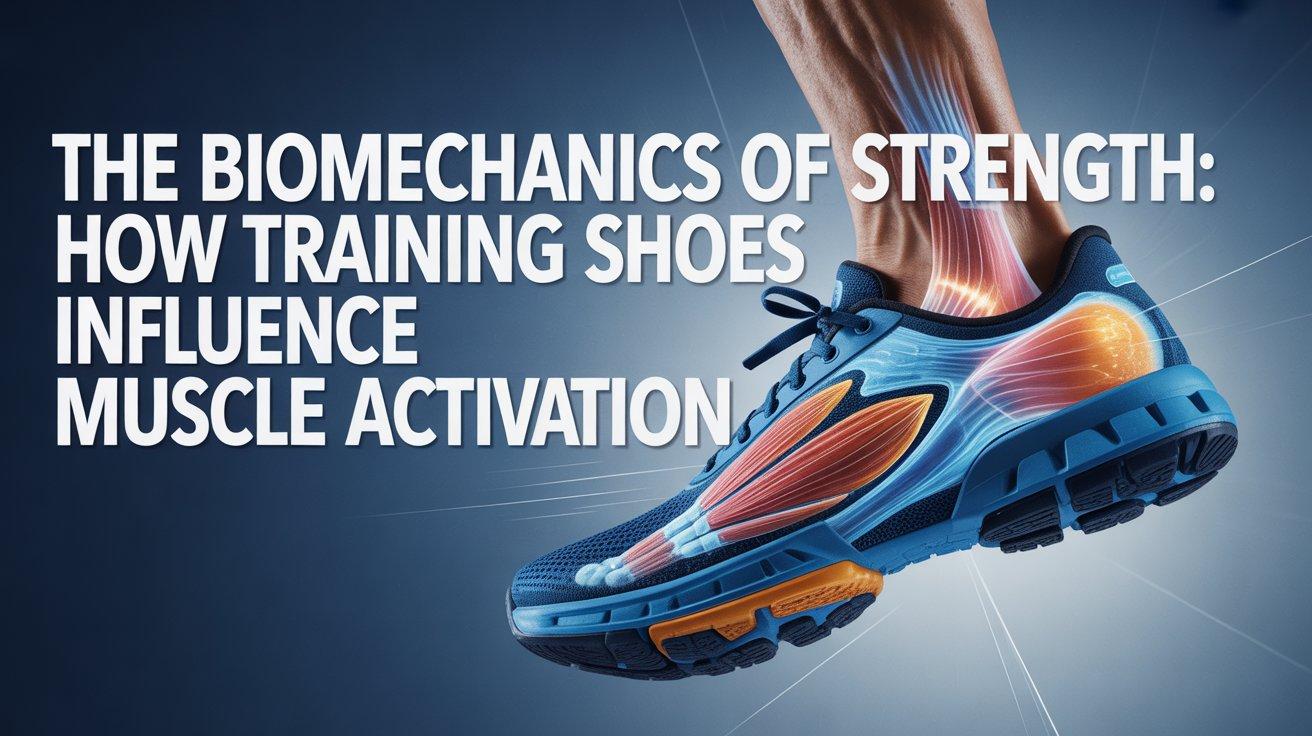The Biomechanics of Strength: How Training Shoes Influence Muscle Activation

Most individuals are concerned with their exercise, nutrition, and rest when it comes to gaining strength and performance. However, there is one reason that is frequently ignored, and that is footwear.
The footwear you have in the training session does much more than that of protecting your feet. They are essential in your balance, stability, and even the way your muscles work during your movement. This correlation can make you gain better out of each workout and minimize the chances of injuries.
The Role of Biomechanics in Strength Training
The study of body movement and the forces that apply to the body is known as biomechanics. In weight lifting, good biomechanics refers to exercise using the right body position and motion pattern. This makes sure that the correct muscles are engaged in the process, and it minimizes the chances of injury. Your feet are the foundation of most exercises, such as squats and overhead presses. This is why, although it may be considered secondary, footwear is a significant factor in the support of your biomechanics.
The training shoes are aimed at enhancing stability and balance. They influence the distribution of body weight on the foot, which directly influences the use of muscles. The padding of your heel, the kind of cushioning, and the flexibility of the shoe can all change the amount of work your muscles have to put in.
How Training Shoes Affect Muscle Activation
Muscle activation refers to how your muscles contract to perform a specific movement. When your feet are supported correctly, the muscles of your legs, core, and back can coordinate better. Here’s how training shoes help make that happen:
Improved Ground Contact
Flat and firm soles in training shoes create a strong connection with the floor. This allows your stabilizing muscles, especially in your feet and ankles, to engage naturally. Better ground contact means better control over your movements, whether you are doing squats or push presses.
Enhanced Stability
Training shoes are built with wider soles and solid heel support. This design prevents unwanted side-to-side movement during exercises that require heavy loads or fast transitions. When your feet remain stable, your glutes, quads, and hamstrings can fire more effectively, leading to better muscle activation and power output.
Balanced Pressure Distribution
A quality pair of training shoes ensures that pressure is evenly distributed across your foot. Uneven weight can cause overuse of certain muscles while underutilizing others. Balanced distribution helps your legs and core work together efficiently, reducing fatigue and improving form. Better Posture and Alignment
Good training shoes keep your feet properly aligned with your knees and hips. This alignment is essential for exercises like squats or deadlifts. When your body is in the correct position, your muscles can work at their full capacity, improving strength gains over time.
The Role of Foot Mechanics in Strength
When you perform an exercise, the movement starts from your feet and travels upward through the kinetic chain of your body. For example, during a squat, your feet press into the ground, which activates your calves, then your quads, hamstrings, and glutes. That activation continues to your core and upper body. If your shoes interfere with this natural flow, your performance suffers.
If the sole of your shoe is too soft or unstable, your body spends extra energy trying to find balance. This reduces the efficiency of muscle activation and can limit your strength output. In contrast, firm and supportive training shoes allow your muscles to contract in harmony, translating more of your effort into strength and power.
Reducing Injury Risk Through Proper Footwear
When choosing your next pair of training shoes, focus on the following aspects:
Flat and Firm Base: Look for shoes that provide a solid connection with the floor. Avoid overly cushioned soles for heavy lifting sessions.
Heel Support: A stable heel prevents wobbling and keeps your movements consistent.Grip and Traction: A Good grip ensures safety during quick or explosive exercises.
Comfort Fit: The shoes should fit snugly but not too tightly, allowing your toes to move naturally.
Investing in the right pair of training shoes, such as gym shoes for men, designed for support and traction by GADZ Sports, can significantly improve your performance and comfort.
Final Thoughts
Strength is not just about lifting heavy weights. It is about how efficiently your body can generate force and maintain control. The connection between your feet and the ground is the starting point of that strength. Training shoes help bridge that connection by providing stability, alignment, and balance. When your feet are supported correctly, your muscles can perform at their best, leading to better strength gains and fewer injuries.
Whether you are a beginner or an experienced athlete, take a moment to look down before your next workout. The shoes you wear are not just a fashion statement. They are the foundation of your strength and the key to unlocking your full potential.
- AI
- Vitamins
- Health
- Admin/office jobs
- News
- Art
- Causes
- Crafts
- Dance
- Drinks
- Film
- Fitness
- Food
- Παιχνίδια
- Gardening
- Health
- Κεντρική Σελίδα
- Literature
- Music
- Networking
- άλλο
- Party
- Religion
- Shopping
- Sports
- Theater
- Wellness


